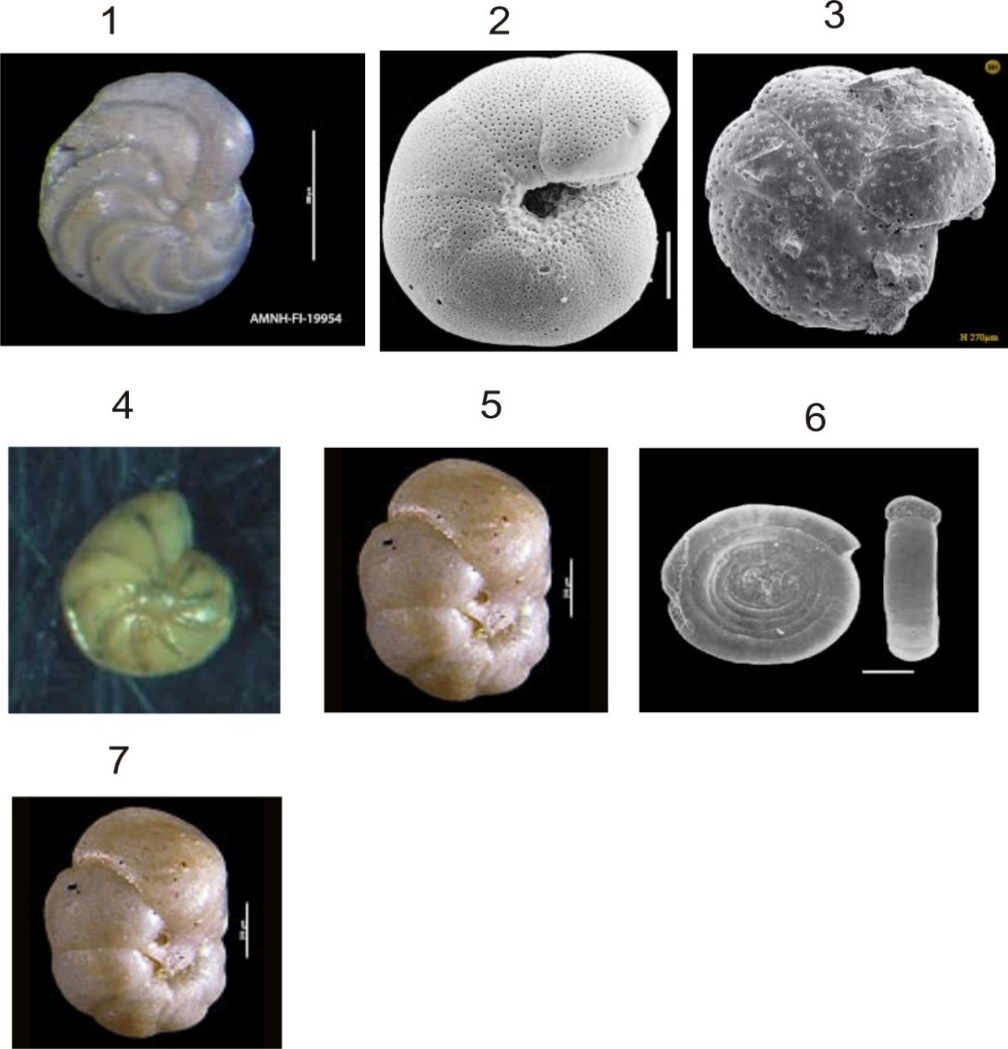Biostratigraphy and paleoenvironment studies of shales from Owan-1 Well, Niger Delta Basin, Nigeria
Keywords:
Sedimentology, Foraminifera, palynology, Shale, paleoenvironmentAbstract
An integrated standard sedimentological, foraminifera, and palynological investigations were carried out on twenty (20) ditch-cutting samples from Owan-1 Well in the Niger Delta Basin, with the depth range from 23 – 456 meters to determine the relative age and depositional environment of the strata penetrated by the well. Standard foraminifera preparation techniques involving sample disaggregation and washing through a 63-micron mesh sieve, drying, and picking of the foraminifera and accessory fauna were employed. Palynological slides were prepared following standard palynological preparation procedures of sample maceration with hydrochloric (HCl) and hydrofluoric (HF) acids. The sedimentological analysis led to the establishment of six (6) lithofacies units comprising shale, claystone, clayey siltstone, fine-grained sandstone, conglomeratic sandstone, and siltstone. Poorly diverse assemblages of benthonic foraminifera with a total of eight (8) species were recorded in which seven (7) species (88%) are calcareous and one (1) arenaceous (12%) while planktic foraminifera are generally absent. Foraminifera species such as Anomalinoides alazanensis, Lenticulina grandis, Ammodiscus glabratus, Valvulineria rugosa, Valvulineria jacksonensis, species of Anomalina, Cibicides and Verneuilina were recovered. Fairly abundant and diverse palynomorphs were recovered from the samples. The palynomorphs were quantitatively dominated by land-derived species such as Verrucatosporites usmensis, Monocolpites sp., and Monoporites annulatus as the diagnostic species. The abundance of massive, dark, and calcareous shales suggests that the studied interval belongs to the marine Akata Formation of the Niger Delta Basin. Foraminifera and palynological results reveal that the studied interval was deposited during the Middle Eocene Epoch corresponding to P470 and P450 Pollen Zonation. Hence, the sediments penetrated by the well were suggested to be deposited in littoral, inner, and middle neritic corresponding to marginal, shallow, and deep marine environments.

Published
How to Cite
Issue
Section
Copyright (c) 2025 K. A Haruna, J. K. Raji, A. Y. Jimoh, J. A. Adeoye, O. O. Alu, A. A. Badmus, B. Garba

This work is licensed under a Creative Commons Attribution 4.0 International License.
How to Cite
Similar Articles
- A. Y. Jimoh, M. B. Saadu, A. A. Adetoro, J. Ajadi, T. Issa, U. Issa, Sedimentological and geochemical evaluation of sandstones of the Ilaro formation, Dahomey Basin, Southwestern Nigeria : Insights into paleoenvironments, provenance, and tectonic settings , Journal of the Nigerian Society of Physical Sciences: Volume 6, Issue 1, February 2024
- S. A. Adepoju, O. J. Ojo, O. Olaniyan, T. E. Bamidele, I. S. Usman, Sedimentological and weathering signature investigation of claystones from Northern Bida Basin, Central Nigeria , Journal of the Nigerian Society of Physical Sciences: Volume 7, Issue 3, August 2025
- Olusola J. Ojo, Suraju A. Adepoju, Ayodeji Awe, Kehinde A. Alalade, Patti formation shales at Agbaja Plateau: A geochemical window into the provenance and tectonic setting history of the Southern Bida Basin, Nigeria , Journal of the Nigerian Society of Physical Sciences: Volume 7, Issue 3, August 2025
- Akindeji Opeyemi Fajana, Adam Muhammed Olawale, Hammed Ajibola Oyesomi, Quantitative reservoir evaluation and hydrocarbon volumetrics :an integrated petrophysical and 3-D static modeling approach in ‘Hamphidex’ field, Niger-Delta, Nigeria , Journal of the Nigerian Society of Physical Sciences: Volume 7, Issue 2, May 2025
- Jinta Jose, Rajesh K. Thumbakara, J. D. Thenge Mashale, Bobin George, Sijo P. George, Homomorphic and restricted homomorphic products of soft graphs , Journal of the Nigerian Society of Physical Sciences: Volume 7, Issue 1, February 2025
You may also start an advanced similarity search for this article.







